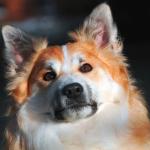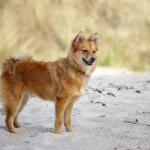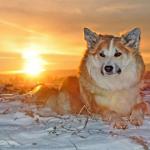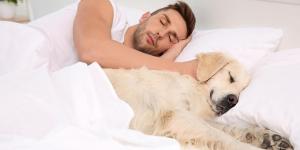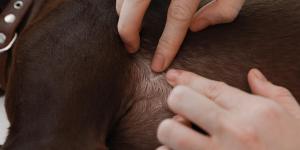Icelandic Sheepdog
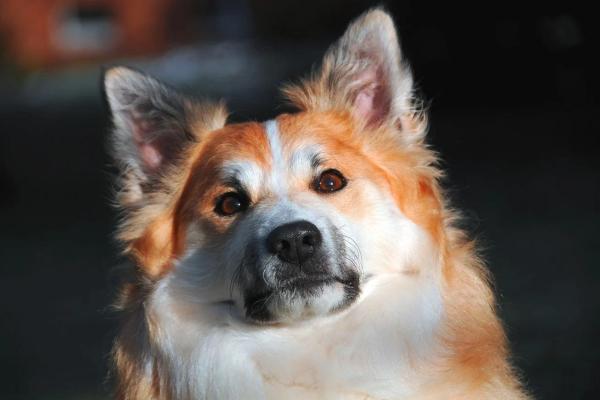
The Icelandic Sheepdog is a breed of dog native to Iceland, where it is considered a popular national symbol. Due to its hardiness, agility and intelligence, it has been used to herd cattle and sheep throughout history. However, in addition to its role as a shepherd and protector of the herds, it is also considered an excellent companion dog due to its cheerful and friendly nature.
Would you like to learn more about the Icelandic Sheepdog? Then do not hesitate to read the following AnimalWised file, where we describe in detail the main characteristics of this dog breed.
- Europe
- Iceland
- Group V
- 5-14
- 14-18
- 18-22
- 22-27
- 27-31
- More than 31
- 2-7
- 7-22
- 22-55
- 55-100
- 100-220
- 8-10
- 10-12
- 12-14
- 15-20
- Low
- Meidum
- High
Origin of the Icelandic Sheepdog
The Icelandic Sheepdog is the only dog breed that originated in Iceland. It was introduced to the island by the first Vikings more than 1,000 years ago.
Over the centuries, the Icelandic Sheepdog adapted to the harsh terrain of Iceland and the needs of Icelandic sheepdogs, becoming an exceptional sheepdog. However, in the late 19th century, a disease wiped out more than 75% of the Icelandic Sheepdog population. This situation and the decline in agricultural needs in the early 20th century brought this breed to the brink of extinction. Today, however, thanks to the work of breeders in Iceland and other countries, the population of this dog breed has recovered. Nowadays, it is kept not only as a grazing dog, but also as a pet, due to its cheerful, friendly and playful character.
If you are interested in learning more about shepherd dogs, we leave you this post with the different types of shepherd dogs.
Characteristics of the Icelandic Sheepdog
The Fédération Cynologique Internationale (FCI) places the Icelandic Sheepdog in Group 5 (Spitz and Primitive type dogs), Section 3 (Nordic Watchdogs and Herders). The main characteristics of its breed standard are the following:
- In general, it shows the typical appearance of a Nordic Spitz, which is longer than high and has a rectangular shape.
- It is a medium-sized dog breed with a weight between 11 and 14 kg and a height of 42 to 46 cm.
- The almond-shaped eyes of medium size, which are almost always dark brown, stand out on the face. A characteristic feature is its endearing facial expression, which is always sweet, friendly, and cheerful.
- The mucous membranes (eyelids, lips, and nose) vary in color: they can be black, dark brown or cream, depending on the coat color.
- The ears are triangular, medium-sized and always erect. They are characterized by being very mobile, reacting to sounds and indicating the animal's state of mind.
- The tail is set high and remains curled. It is quite hairy and the length of the hair is in proportion to the length of the rest of the coat.
- Being a Nordic dog, its coat is two-layered. It is also dense and extremely weather resistant. The hair is shorter on the face, head, and front of the limbs and longer on the neck, chest, and back of the thighs.
Colors of the Icelandic Sheepdog
Within the breed, two varieties are distinguished, depending on the length of the coat:
- Shorthaired: The outer layer of hair is of medium length, and the undercoat is thick and soft.
- Longhaired: The outer layer of hair is longer and the undercoat is equally thick and soft.
Regardless of the length of the hair, the coat color of the Icelandic Sheepdog is always a combination of white and other predominant colors, which can be:
- Cream
- Reddish brown
- Chocolate brown
- Gray
- Black
White markings are usually found on the face, neck, chest, legs (boots of varying height and on the tip of the tail). Also, brown and gray dogs often have a black mask on the face.
Character of the Icelandic Sheepdog
As for their temperament, Icelandic Sheepdogs are happy, affectionate and playful dogs. When they do their herding work, they concentrate on their work, and it is common to hear their barking frequently, as their barking warns of danger.
In general, they are dogs that adapt perfectly to families with children and to other dogs. However, it is not recommended to keep them in a house with smaller animals (such as rabbits, guinea pigs, etc.), as they tend to chase small animals due to their herding instinct.
Also, keep in mind that these are particularly active dogs that really enjoy outdoor activities and long walks with their owners. For this reason, it is also not recommended to keep them in apartments or small houses. They should live in houses with large properties where they can enjoy the outdoors.
Care of the Icelandic Sheepdog
In addition to the basic care of any dog, dogs of this breed have a number of special features that must be observed:
- Diet: The Icelandic Sheepdog should be fed a high quality diet appropriate for its age and activity level. When choosing the ration for these animals, it is important to take into account their daily energy consumption, which varies greatly depending on whether they are working dogs or pets.
- Exercise: Icelandic Sheepdogs are very athletic, active and intelligent dogs, so exercise should be part of their daily routine. They are very energetic dogs that need a combination of physical and mental exercise to stay physically and mentally healthy. For this reason, in addition to daily walks, it is essential to provide them with games and training that will stimulate them both physically and mentally. Otherwise, Icelandic Sheepdogs may develop destructive behaviors, anxiety, or other behavioral problems.
- Hygiene: like all Nordic dogs, the Icelandic Sheepdog frequently molts, especially in the spring and fall. For this reason, it is important to brush him regularly (2-3 times a week during the molt) to remove all dead hair and make the new coat look nicer and healthier.
- Temperature: Due to their origin, Icelandic Sheepdogs do not tolerate high temperatures well. Therefore, it is critical to protect them from heat and sun in summer, especially during midday.
Training of the Icelandic Sheepdog
As with any other breed, training and socialization with humans and other animals must begin at an early age.
The Icelandic Sheepdog is an intelligent and willing dog, so it is generally easy to train and learns quickly. However, training should always be based on positive reinforcement, as harsh corrections can have very negative consequences for the animal.
As a characteristic feature, it should be pointed out that it is a very vocal breed, since it originally barked to warn shepherds of possible dangers in the mountains. For this reason, it is common for Icelandic Sheepdog puppies to bark at anything that catches their attention. Although this is a normal and natural behavior of this breed, this habit can be corrected with proper positive training.
On the other hand, it is important to remember that a herding dog often has the instinct to chase small animals or even vehicles. For this reason, it is advisable to train and correct this behavior from an early age to avoid dangerous situations in the future.
Positive reinforcement is a method in which good behavior is reinforced because it is followed by a positive reinforcer that the dog finds pleasurable. Read this other article about positive reinforcement in dogs, its effectiveness and the results it has on a dog's training process.
Health of the Icelandic Sheepdog
Like many other dogs, the Icelandic Sheepdog is susceptible to a number of diseases. Some of the most common in this breed are:
- Hip dysplasia
- Patellar luxation
- Cataracts
- Distichiasis
- Cryptorchidism
Regular veterinary examinations (twice a year) are important to detect these or other diseases early and to initiate early treatment.
Despite some predisposition to some diseases, the breed is generally healthy and has a life expectancy of 12 to 14 years.
Where to adopt an Icelandic Sheepdog
If you are thinking of adding an Icelandic Sheepdog to your family, we recommend that you first visit the animal shelters and animal welfare organizations in your area. This allows you to personally meet the dogs waiting to be adopted.
However, you should know that the Icelandic Sheepdog is not a common breed, so it might be difficult for you to find a dog waiting for a foster home. For this reason, you can also contact the clubs or societies responsible for the breeding and preservation of this breed, so that they can help you in your search.
When you take in a new member of your family, don't worry about whether it conforms to a breed standard, but rather whether you can adopt the pet's needs and lifestyle into your own.
Icelandic Sheepdog photos
